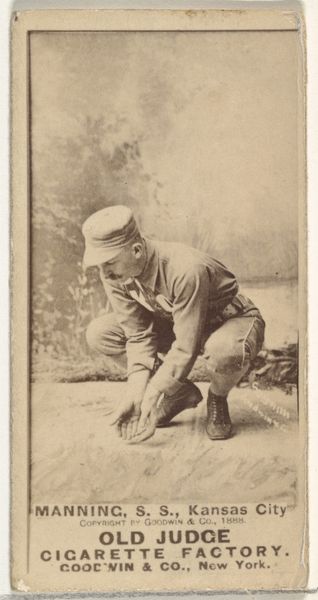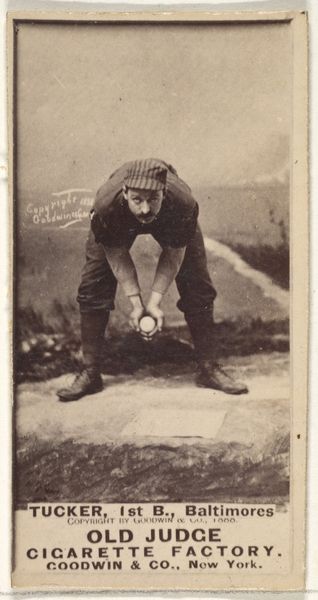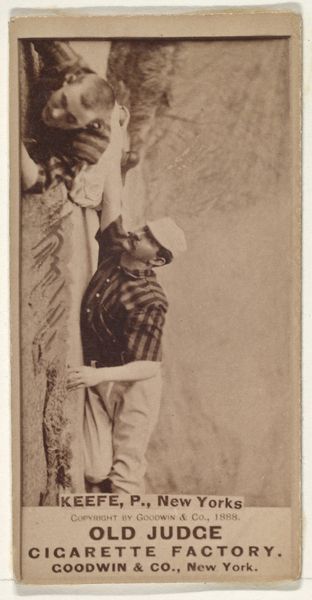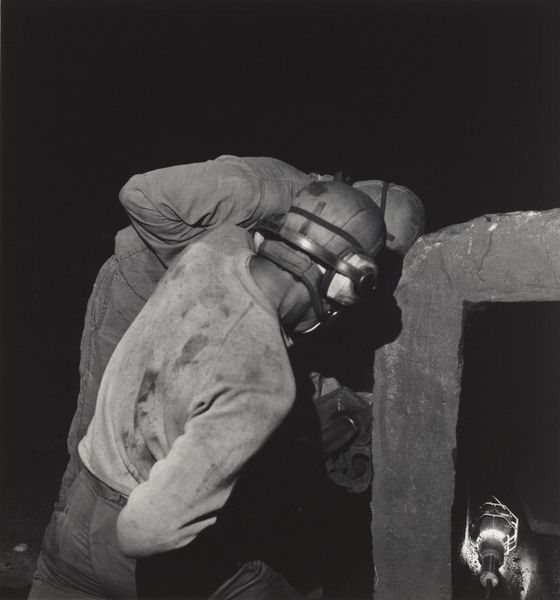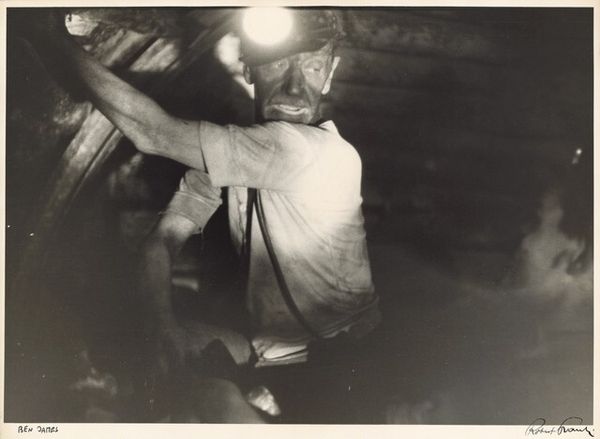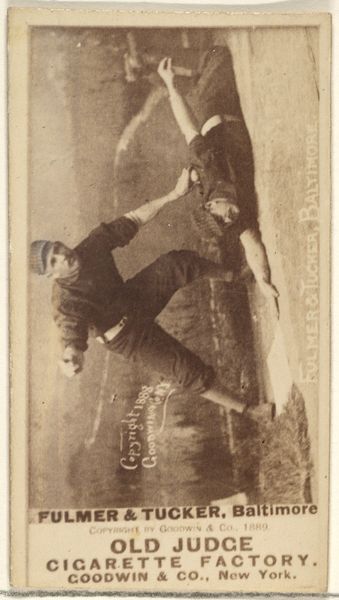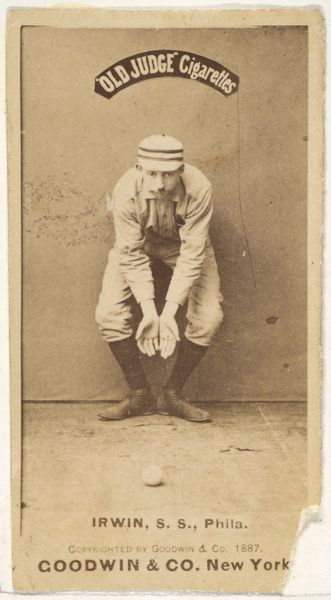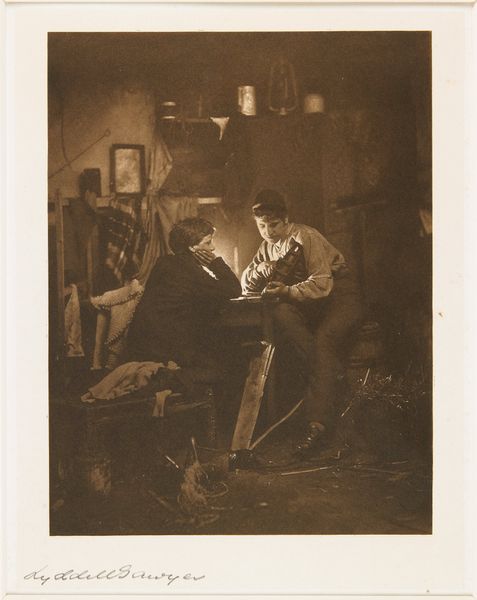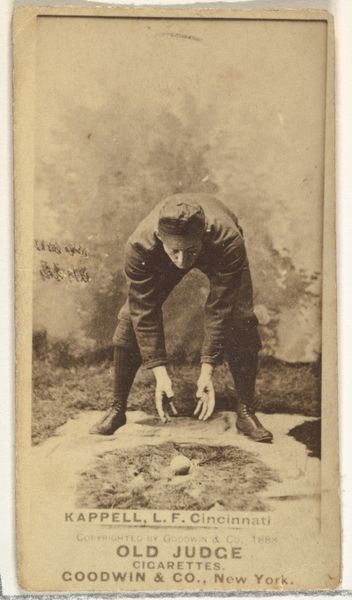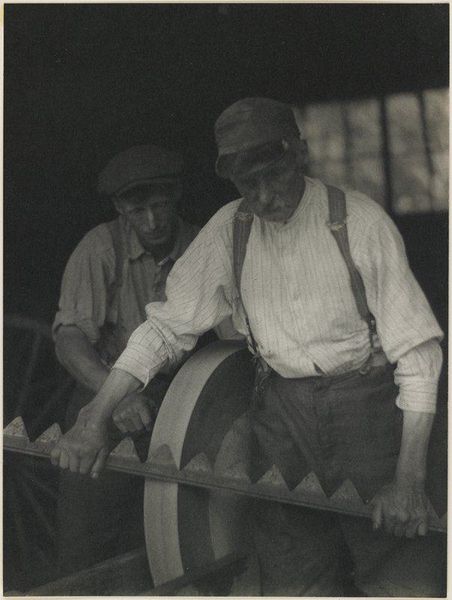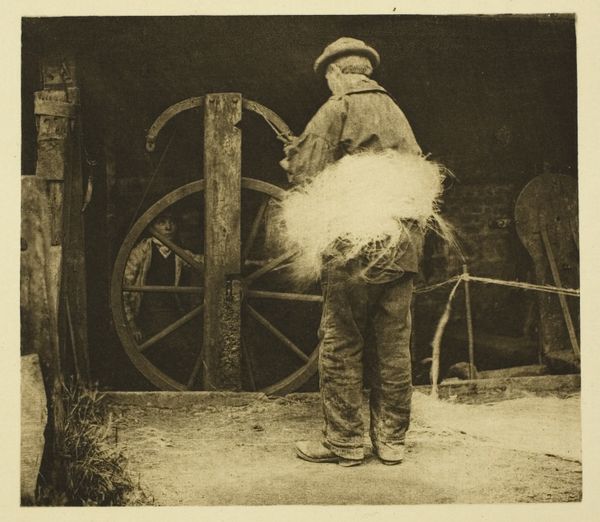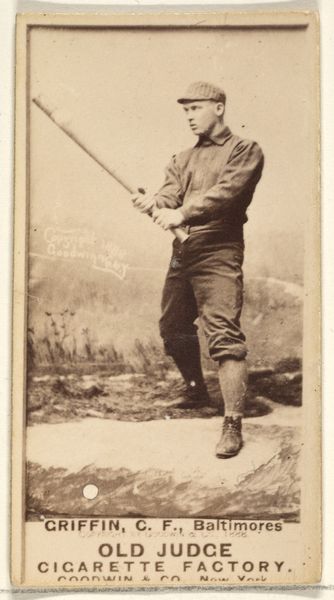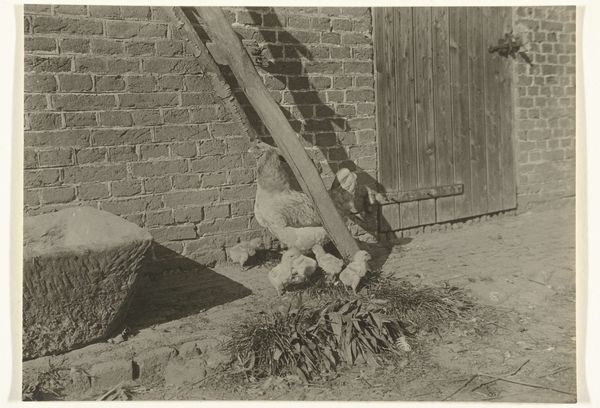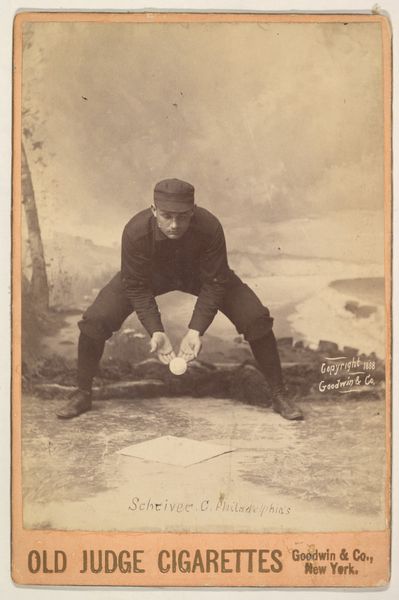
photography, gelatin-silver-print
#
portrait
#
photography
#
gelatin-silver-print
#
ashcan-school
#
united-states
#
modernism
#
realism
#
exhibition
Dimensions: 10 1/8 x 13 3/16 in. (25.72 x 33.5 cm) (image)10 1/8 x 13 3/16 in. (25.72 x 33.5 cm) (mount)
Copyright: No Copyright - United States
Curator: Standing before us is an Untitled gelatin-silver print by Lewis Hine, dating to around 1910, currently held in the Minneapolis Institute of Art. What are your initial thoughts? Editor: Striking. The composition directs the eye downward, mirroring the laborer’s posture. There's a pronounced contrast, emphasizing the subject’s muscular build and the stark environment. It feels raw, immediate. Curator: Hine's background as a sociologist profoundly shaped his artistic output. He believed in using photography as a tool for social reform, documenting the working conditions and lives of the less privileged. The materials of production, gelatin and silver, became tools for witnessing and conveying harsh realities. Editor: Absolutely. But look at how Hine uses light—almost like a spotlight—to sculpt the man’s body. This elevates the image beyond mere documentation. The formal elements create a sense of dignity, almost heroism, despite the evident labor. Consider how the composition leads the viewer to the hand placement into the surface which becomes one with the shadow and dark tonality. Curator: The "Ashcan School" influence is apparent, focusing on the unvarnished realities of urban life. While some viewed the depiction of labor as 'low' subject matter, Hine saw dignity and purpose in these unseen lives. He challenged notions of what constituted acceptable artistic subjects. Editor: Indeed, by carefully balancing realism and dramatic lighting, Hine transcends pure documentary and achieves a powerful commentary on labor and the human spirit. Curator: It underscores how the industrial process shapes not only the products but also the lives and bodies involved in it. Photography itself becoming a key part of social progress. Editor: Ultimately, this photograph compels us to look at the structure itself – its use of light, shape, and line. Curator: Seeing it as part of its historical and sociological fabric enhances its value; it reminds us of the conversations and change a single artwork can generate. Editor: I'd agree to this. Thinking of the elements in this photograph like light or lack thereof emphasizes the strength found in this very image and how they affect meaning or intention, if there is any in this artwork.
Comments
No comments
Be the first to comment and join the conversation on the ultimate creative platform.
